Infraorder Brachyura Higher classification Grapsus Rank Species | Scientific name Grapsus grapsus | |
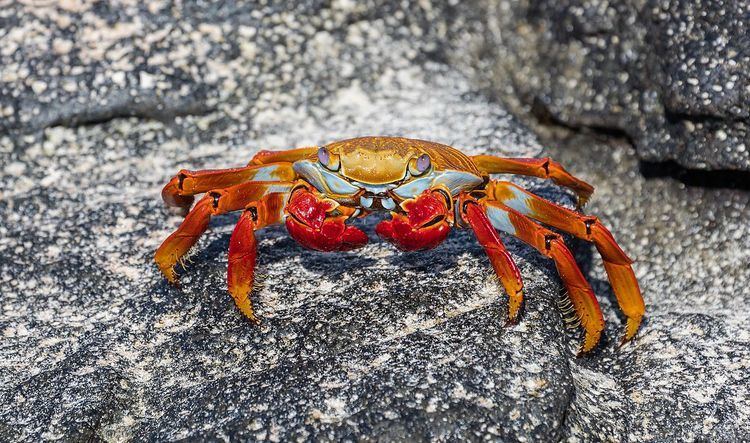 | ||
Similar Grapsus, Marine iguana, Atlantic ghost crab, Galapagos land iguana, Blue‑footed booby | ||
Sally lightfoot crab grapsus grapsus wmv
Grapsus grapsus is one of the most common crabs along the western coast of the Americas. It is known variously as, "red rock crab", "abuete negro", and along with crabs such as Percnon gibbesi as, "Sally Lightfoot".
Contents
- Sally lightfoot crab grapsus grapsus wmv
- Species report grapsus grapsus crab
- Distribution
- Description
- Taxonomy
- Ecology and behaviour
- References
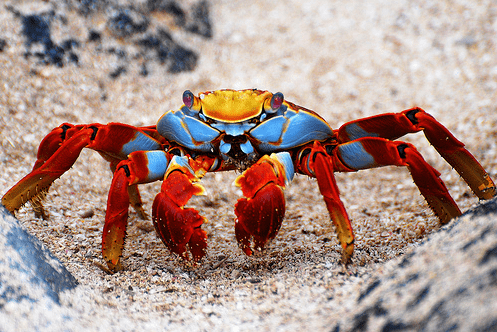
Species report grapsus grapsus crab
Distribution
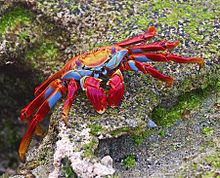
Grapsus grapsus is found along the Pacific coast of Mexico, Central America, South America (as far south as northern Peru), and on nearby islands, including the Galápagos Islands. It is also found along the Atlantic coast of South America, but is replaced in the eastern Atlantic Ocean (Ascension Island and West Africa) by its congener Grapsus adscensionis.
Description
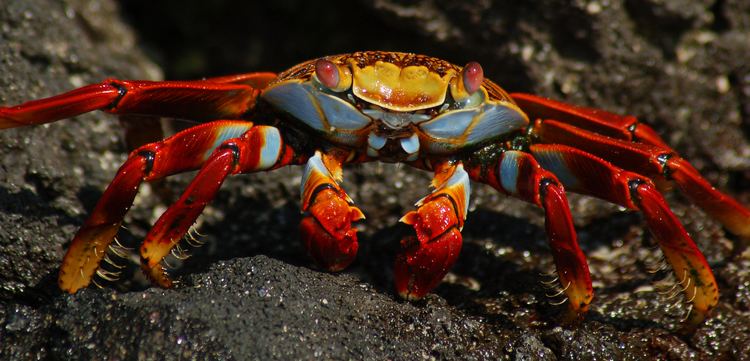
Grapsus grapsus is a typically shaped crab, with five pairs of legs, the front two bearing small, blocky, symmetrical chelae. The other legs are broad and flat, with only the tips touching the substrate. The crab's round, flat carapace is slightly longer than 8 centimetres (3.1 in). Young G. grapsus are black or dark brown in colour and are camouflaged well on the black lava coasts of volcanic islands. Adults are quite variable in colour; some are muted brownish-red, some mottled or spotted brown, pink, or yellow.
Taxonomy
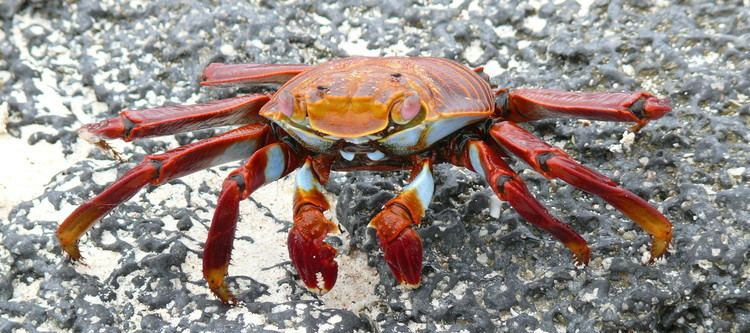
Grapsus grapsus was first described by Carl Linnaeus in the 1758 10th edition of Systema Naturae as "Cancer grapsus".
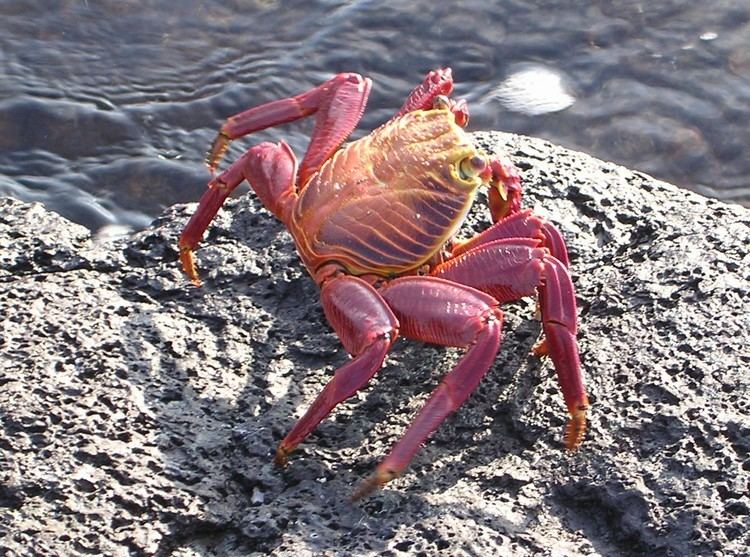
The species Grapsus grapsus and G. adscensionis were not separated until 1990. The latter is found in the eastern Atlantic, while the former is not. While the validity of the separation into two species has been questioned, there are constant morphological differences in the colouration of the pereiopods and the form of the first zoea larva, and no evidence for any genetic connection between the two populations, and they are generally treated as separate species.
Ecology and behaviour
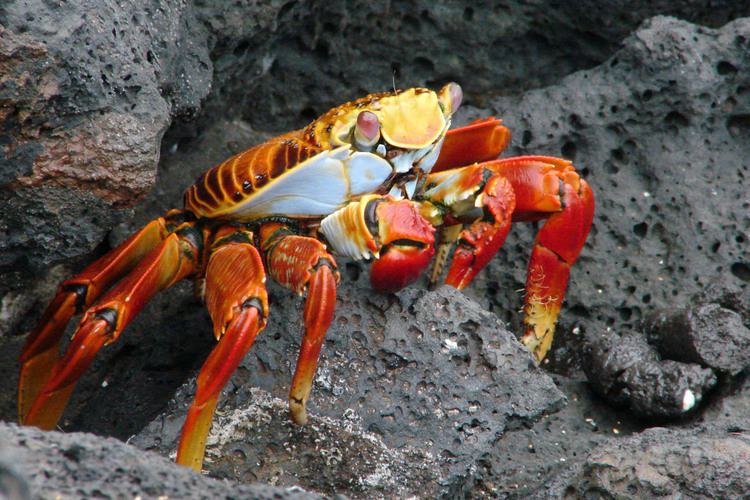
This crab lives amongst the rocks at the often turbulent, windy shore, just above the limit of the sea spray. It feeds on algae primarily, sometimes sampling other plant matter and dead animals. It is a quick-moving and agile crab, and hard to catch. Not considered very edible by humans, it is used as bait by fishermen.
G. grapsus has been observed in an apparent cleaning symbiosis taking ticks from marine iguanas on the Galápagos Islands.
Grapsus grapsus was collected by Charles Darwin during his voyages on HMS Beagle, and also by the first comprehensive study of the fauna of the Gulf of California, carried out by Ed Ricketts, together with John Steinbeck and others. Steinbeck records:
Many people have spoken at length of the Sally Lightfoots. In fact, everyone who has seen them has been delighted with them. The very name they are called by reflects the delight of the name. These little crabs, with brilliant cloisonné carapaces, walk on their tiptoes, They have remarkable eyes and an extremely fast reaction time. In spite of the fact that they swarm on the rocks at the Cape [San Lucas], and to a less degree inside the Gulf [of California], they are exceedingly hard to catch. They seem to be able to run in any of four directions; but more than this, perhaps because of their rapid reaction time, they appear to read the mind of their hunter. They escape the long-handled net, anticipating from what direction it is coming. If you walk slowly, they move slowly ahead of you in droves. If you hurry, they hurry. When you plunge at them, they seem to disappear in a puff of blue smoke—at any rate, they disappear. It is impossible to creep up on them. They are very beautiful, with clear brilliant colors, red and blues and warm browns.
…
